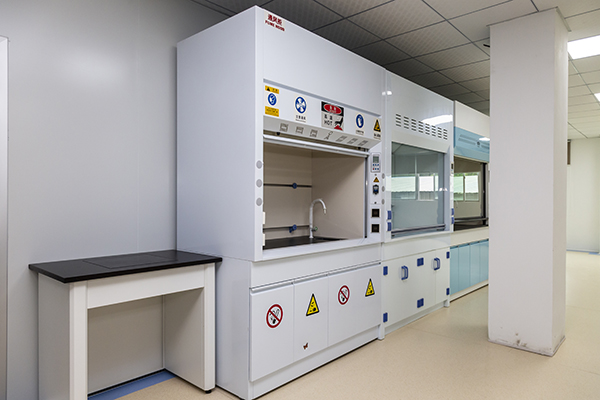Table of Contents
The chemical laboratory is a space with a specific risk factor. The experimental operation uses some reagents and drugs such as acids, alkalis, and organic solvents; glassware such as test tubes, flasks, beakers, and condensers; atomic absorption, gas chromatography, liquid chromatography, ultraviolet spectrophotometry; Precision instruments such as meters and high-temperature equipment such as ovens and muffle furnaces. Therefore, laboratory planning and design must take “practicality and safety” as the starting point, comprehensively consider various instruments and equipment’s safety operation requirements, and configure related experimental equipment.
General and Analytical Chemistry Laboratory
General and analytical chemistry laboratories are engaged in research experiments, including mixing, heating, cooling, distillation, evaporation, dilution, and the reaction of chemicals. This work can be operated on an open laboratory bench or a fume hood. Analytical equipment such as spectrophotometers, Gas, liquid chromatography, etc., and analytical chemistry laboratories often use harmful substances, including highly toxic, volatile liquids, powders, and pressurized flammable gases. Although the analysis process of toxic substances can be decomposed into non-toxic compounds, they are still contaminated in analytical operations. It is generally not recommended for analytical chemistry laboratories to operate extremely poisonous chemicals, such as carcinogenic, deadly, and explosive chemicals and highly radioactive substances etc.
Lab furniture required in gerneral chemistry laboratory: side wall lab table, island workbench with sink and reagent rack, fume hood, chemical storage cabinet, glassware storage cabinet, reflux condensing device (small water cup and water coke), suction filtration device (suction filtration faucet, small water cup slot).
Organic Chemistry Laboratory
The organic chemistry laboratory is engaged in research experiments, including general organic analysis (quantitative analysis and qualitative analysis, drug testing (content determination and identification), pesticide residue determination (666 DDT pesticide residues, chrysanthemum pesticide residues, organic nitrogen pesticide residues, organic phosphorus pesticides). Deposition, gas analysis (component analysis of artificial Gas, composition analysis of natural Gas, composition analysis of liquefied petroleum gas), determination of harmful substances (phenazopyridine, polycyclic aromatic hydrocarbons, aflatoxins), identification of unknown substances by infrared spectroscopy, identification of unknown substances by mass spectrometry, detection samples (water, food, blood samples), etc. The organic laboratory has large-scale instruments and supporting facilities such as high-performance liquid chromatography, gas chromatography, thin layer scanner, elemental analyzer, nuclear magnetic resonance instrument, and infrared absorption spectrometer.
Lab furniture required in organic chemistry laboratory: side wall lab workbench, island lab workbench with overall ventilation hood, chemical storage cabinet, glassware storage cabinet, reflux condensing device (small water cup and water cup), suction filtration device (suction filtration faucet, small water cup slot).
Inorganic Chemistry Laboratory
The inorganic chemistry laboratory is engaged in research experiments, including quantitative analysis of heavy metals (lead, cadmium, mercury, arsenic, etc.), including various types of samples such as environment, food, biology, Chinese medicinal materials, qualitative and quantitative analysis of common trace metals, such as Fe, Cu, Ca, K, Mg, Mn, Zn, Li, Mo, Sr, Co, etc., trace precious metal elements (Au, Ag, Pt) and trace metal elements (such as Tl), non-metals and their compounds (such as Se, B, P, N, NO2-, NO3-, F-, Cl-, SO42-, etc.), various items of volume analysis, content analysis of Chinese herbal medicines and Chinese patent medicines, food nutrition analysis (such as carbohydrates, Starch, fat, cellulose, etc.), analysis of physical indicators (such as density, melting point, refractive index, optical rotation, PH value, moisture, etc.), analysis of various physical and chemical indicators of inorganic chemical reagents. In addition, the inorganic laboratory has large imported precision instruments such as atomic absorption spectrometer, ultraviolet spectrometer, fluorescence spectrometer, inductively coupled plasma atomic emission spectrometer, and ion chromatograph, which can undertake the analysis and testing of most inorganic projects.
Lab furniture required in the inorganic chemistry laboratory: a side wall lab workbench, island lab workbench with sink and reagent rack, lab fume hood, chemical storage cabinet, glassware storage cabinet, and suction filtration device (suction filtration faucet, small water cup slot).




